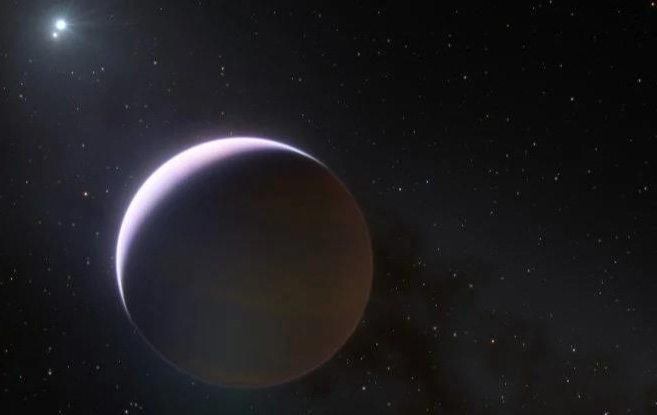When placed alongside our Solar System, everything in the recently discovered extraterrestrial world appears as mythical giants, challenging the principles of planet formation.
According to Science Alert, this is a binary star system known as b Centauri, which hosts a massive planet named b Centauri b. It is located 325 light-years away from us and was discovered by a team of scientists from Stockholm University (Sweden).

Artist’s depiction of the giant planet in the newly discovered binary star system – (Image: ESO).
The two “suns” in this incredibly massive star system have a combined mass ten times that of our Sun, which is already one of the largest stars in the universe. The two stars orbit so closely that they were initially mistaken for a single star.
The publication in the scientific journal Nature states that the planet b Centauri b is equally impressive: it has a mass 10.9 times that of Jupiter, which is 3,466 times that of Earth. It orbits its parent stars at a distance of 566 astronomical units (1 astronomical unit is the distance from the Sun to Earth).
Despite being very far away, the brightness of the parent stars and the size of the planet made it clear enough for scientists to capture images.
“The planet b Centauri b is a world with an environment completely different from what we experience here on Earth and in our Solar System. It has a harsh environment, dominated by extreme radiation, where everything is on a gigantic scale,” describes astronomer Gayathri Viswanath, one of the lead authors of the study.
It is precisely the immense distance from its parent stars that has allowed this massive planet to avoid being vaporized by the intense radiation from these great and fierce “mothers.”
While it is deemed unlikely to support life, this giant world offers many other intriguing aspects. Previously, astronomers believed that all planets formed according to a core accretion model: in a molecular cloud, a star forms and begins to create a vortex that pulls material toward itself, leading to a young star surrounded by a massive disk of gas and dust.
Over time, this gas and dust disk gradually accumulates into planets. The larger the planet, the more the gas and dust disk diminishes and narrows, resulting in a “clean” star system like our Solar System. However, the super planet just discovered lies too far from its parent star to have formed according to this model.
Therefore, it is time for astronomers to reconsider the known models of planet formation.


















































